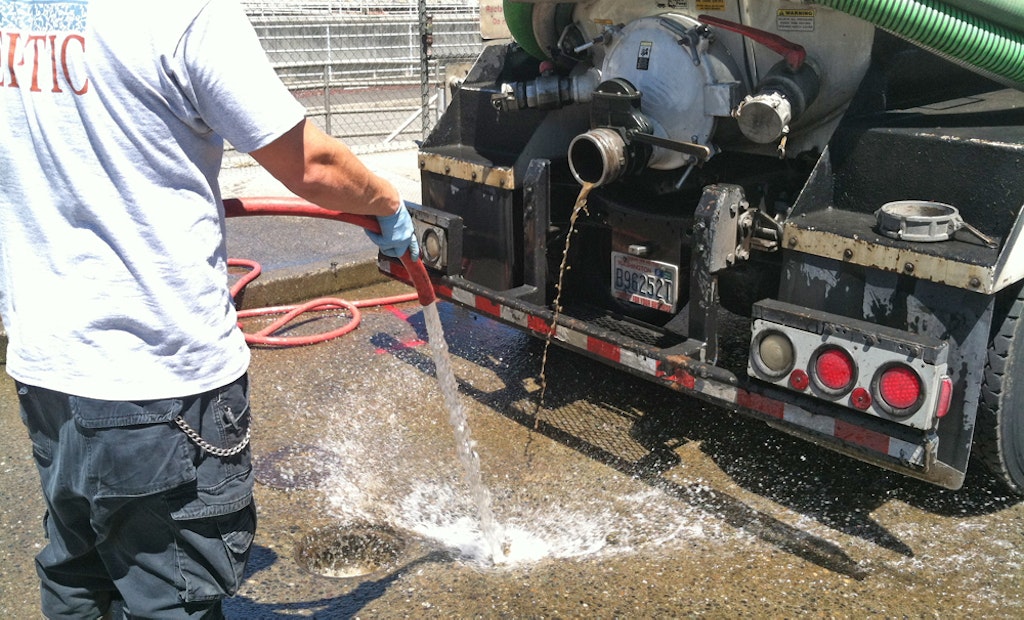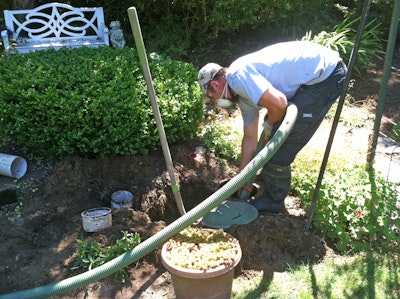
Interested in Trucks?
Get Trucks articles, news and videos right in your inbox! Sign up now.
Trucks + Get AlertsHundreds of infectious agents live in human waste. Unfortunately, not many workers in the industry are properly protecting themselves. The good news? It’s relatively easy to upgrade personal protective gear to defend against the bacteria, viruses, protozoa and parasites that surround them on the job.
The risk is made clearer by a 2013 study of pathogen exposure by the Washington On-Site Sewage Association, according to Executive Director John Thomas. A $138,005 Safety and Health Investment Project (SHIP) Grant from the Washington State Department of Labor & Industries funded the field and laboratory study.
As part of the grant, WOSSA developed classroom training materials — Thomas began leading training sessions in 2014 — to raise awareness about the issue and the exposures.
Data doesn’t lie
Did you know there are more than 200 known viruses and bacteria in wastewater that can make you sick? While these pathogens in wastewater are commonly known and some workers are more at risk for exposure than others, the study identified new pathogens.
“The current selection and use of personal protective equipment is inadequate for these pathogens or not used at all,” Thomas says. “We found viable MRSA bacteria, a staph infection resistant to antibiotics, in liquid sampling. Once you get it, it is very hard to get rid of.
“We also had positive tests for a family of bacteria that includes chlamydia, a sexually transmitted disease, from aerosolized wastewater being dumped at a septage handling facility.
“The most common exposures came from direct contact with wastewater through immersion, splash back, and exposure to aerosols created by work activities.” Workers were even exposed 90 feet away from equipment.
On a 45-minute job, Thomas says they watched pumpers touch their face an average of 18 times. And when it’s hot and humid, sweat dripping into the eyes can cause pink eye.
 Bottom line: If you touch it without gloves it’s not safe — even cellphones were contaminated with E. coli.
Bottom line: If you touch it without gloves it’s not safe — even cellphones were contaminated with E. coli.
Shock factor
Perhaps pathogen exposure from splash back or immersion is a no-brainer, but Thomas says he was most surprised by the amount of airborne pathogens pumpers inhale.
“This was caused by the creation of aerosols with things like jetting or back flushing,” he says. “Another common practice was a pumper washing down the sides of the septic or pump tank and then pumping out the residual water.
“Our testing showed the aerosol cloud was much bigger than we thought. We also found that the air venting out of the bottom of the pump truck during pumping gave positive hits for pathogens as far as 60 feet away.
“The study identified two cases of pink eye from getting sewage in the eyes that required emergency room treatment, a case of giardia [caused by a parasite] from an open wound exposed to sewage, and cases of hepatitis and E. coli from companies participating in the training.”
Of course, opinions on the severity of the issue differ from pumper to pumper. “Many older workers say they’ve been pumping septic tanks for years without getting sick,” Thomas says. “Nearly 100 percent of the younger workers interviewed told us they’ve gotten sick with flu-like symptoms in the first six months and think it was from the job.”
The problem is that flu-like symptoms often go away after a week so workers blamed it on something else.
Right and wrong PPE
 Pumpers should use various levels of PPE to protect against pathogen exposure. After evaluating current PPE options, the study found two problems. “We often see guys using basic work gloves or nitrile gloves,” he says.
Pumpers should use various levels of PPE to protect against pathogen exposure. After evaluating current PPE options, the study found two problems. “We often see guys using basic work gloves or nitrile gloves,” he says.
“First, nitrile gloves, rated for industrial use, didn’t have the durability for the work and would come apart. Second, there’s a difference between gloves rated for industrial or food handling and those rated exam-quality or medical gloves.
“Pumpers should be using exam-grade gloves with a minimum thickness of 4 to 6 mil for durability. Industrial-grade or mechanic’s gloves may keep your hands clean, but they don’t protect you from the pathogens.”
You can improve protection and can effectively manage these exposures with a few of simple changes:
- Make sure employees use the appropriate kind of face protection to prevent inhalation when jetting, back flushing, or during the operation of the pump truck. Upgrade dust masks or other kinds of facemasks to N95 surgical masks — a simple dust mask is not designed to protect a worker from that kind of exposure.
- Eye protection should protect from splashes, sprays and airborne aerosols from multiple angles, so invest in goggles rather than a simple pair of safety glasses.
OSHA’s General Duty Clause and state labor and industry requirements mandate that employers provide a safe workplace, but the challenge is to understand what the exposures are so they can take the proper steps to mitigate them, Thomas says.
“Folks in the industry build up immunities over time, but something like MRSA — that public health departments have found widespread in communities in just one septic tank — means there is potential for it in any septic tank, so that’s the exposure level they have to protect their employees against.”
Some might say the simple solution to reducing exposure is more regulations. Or just the opposite — fewer regulations, more personal responsibility. “The answer is not easy since sewage is generally not a regulated waste like blood borne pathogens and you don’t need placarding to transport it,” Thomas says. “There really isn’t a designated category for us as an industry classification.”
Changing the future
On a positive note, Thomas says some trainees have changed their behavior as a result of the comprehensive training. “Some employers also are changing out PPE to make sure it is fit for use and designed to give workers proper protection from pathogens.”
He says students in his training courses have offered helpful feedback, and they even recommended it be mandatory for everyone in the industry.
“It was surprising that in nearly every class we’ve done, someone has come up afterward with their story about getting sick, from pink eye to infections and the ‘poop flu,’” he says.
Whether you think pumpers do enough to protect themselves against exposure or you’re gung-ho on more education, it’s clear more training has an impact.
“We hope education and awareness will effect real change for how safety happens in our industry,” Thomas says. “It is important information that will have a positive impact and, with a few simple steps, reduce both the exposures and the number of work days lost to illness.”







